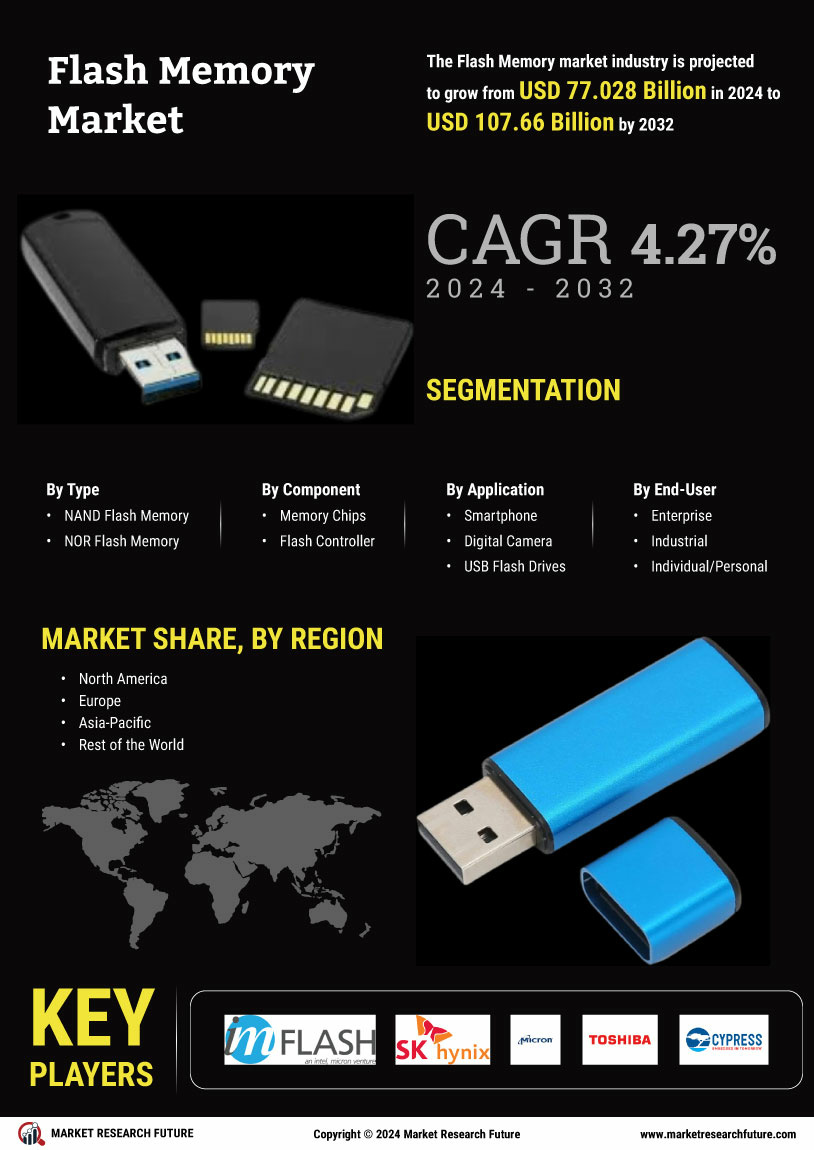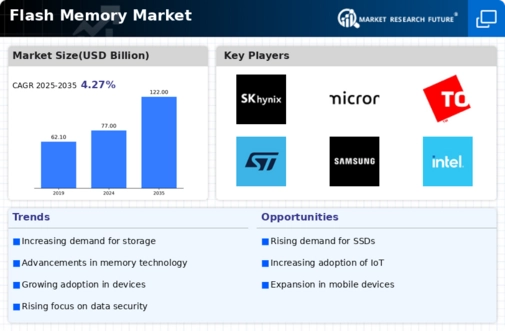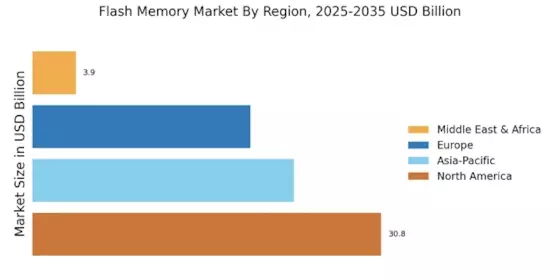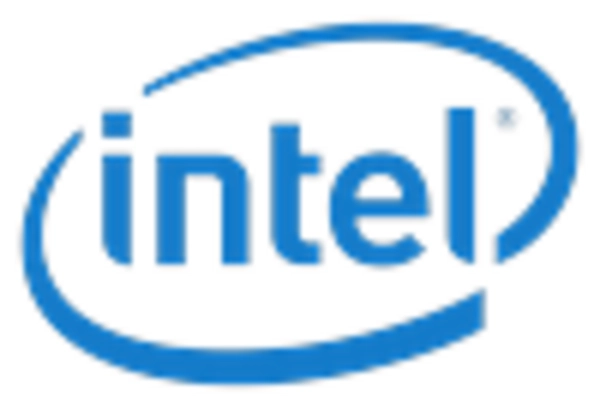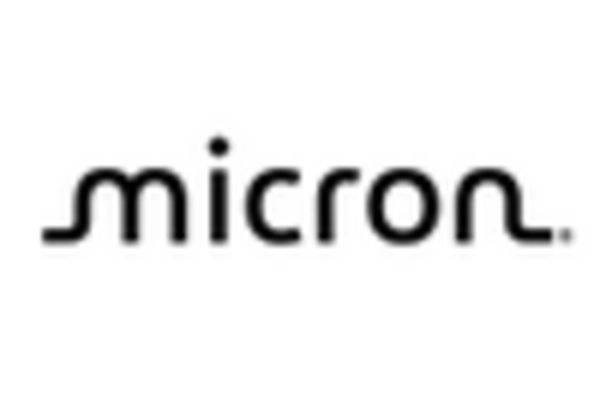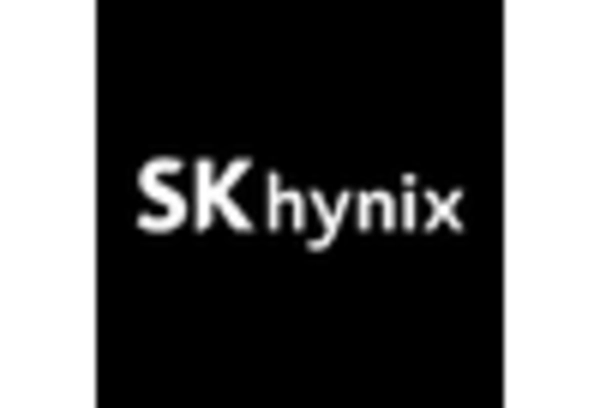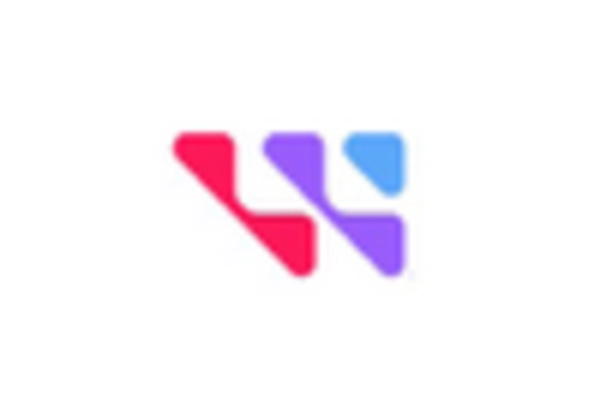Expansion of Data Centers
The rapid expansion of data centers is significantly influencing the Flash Memory Market. With the increasing reliance on cloud computing and big data analytics, data centers require robust storage solutions to manage vast amounts of information. In 2025, The Flash Memory Market is projected to reach a valuation of over 200 billion dollars, highlighting the critical role of flash memory in supporting these infrastructures. Flash memory offers advantages such as faster data access speeds and improved energy efficiency, making it an attractive option for data center operators. This trend suggests that the Flash Memory Market will continue to thrive as data centers increasingly adopt flash memory technologies to enhance their operational capabilities.
Emergence of 5G Technology
The rollout of 5G technology is poised to have a profound impact on the Flash Memory Market. With its promise of faster data transmission speeds and lower latency, 5G is expected to facilitate the development of advanced applications that require substantial data storage capabilities. As industries such as autonomous vehicles, smart cities, and augmented reality gain traction, the demand for high-performance flash memory solutions will likely increase. In 2025, the number of 5G connections is projected to reach 1.5 billion, underscoring the potential for growth in the Flash Memory Market as these technologies become more prevalent.
Increasing Adoption of Mobile Devices
The proliferation of mobile devices, including smartphones and tablets, is a primary driver of the Flash Memory Market. As consumers increasingly rely on these devices for various applications, the demand for high-capacity flash memory solutions rises. In 2025, it is estimated that the number of smartphone users will surpass 6 billion, further fueling the need for efficient storage solutions. This trend indicates a shift towards larger storage capacities, as users seek to store more applications, media, and data on their devices. Consequently, manufacturers are compelled to innovate and enhance their flash memory offerings to meet this growing demand, thereby propelling the Flash Memory Market forward.
Rising Demand for Consumer Electronics
The escalating demand for consumer electronics is a significant driver of the Flash Memory Market. As technology continues to advance, consumers are increasingly seeking devices with enhanced storage capabilities, such as laptops, gaming consoles, and smart home devices. In 2025, the consumer electronics market is expected to exceed 1 trillion dollars, with flash memory playing a crucial role in meeting the storage needs of these devices. Manufacturers are responding by developing innovative flash memory solutions that offer higher speeds and capacities, thereby supporting the growing consumer appetite for advanced electronics. This trend indicates a robust future for the Flash Memory Market as it adapts to the evolving landscape of consumer technology.
Growth in Internet of Things (IoT) Devices
The surge in Internet of Things (IoT) devices is a notable driver of the Flash Memory Market. As more devices become interconnected, the demand for efficient and reliable storage solutions escalates. By 2025, it is anticipated that there will be over 30 billion IoT devices in use, each requiring flash memory for data storage and processing. This growth presents opportunities for manufacturers to develop specialized flash memory products tailored to the unique needs of IoT applications. The integration of flash memory in IoT devices not only enhances performance but also supports the increasing data generation from these devices, thereby driving the Flash Memory Market.
